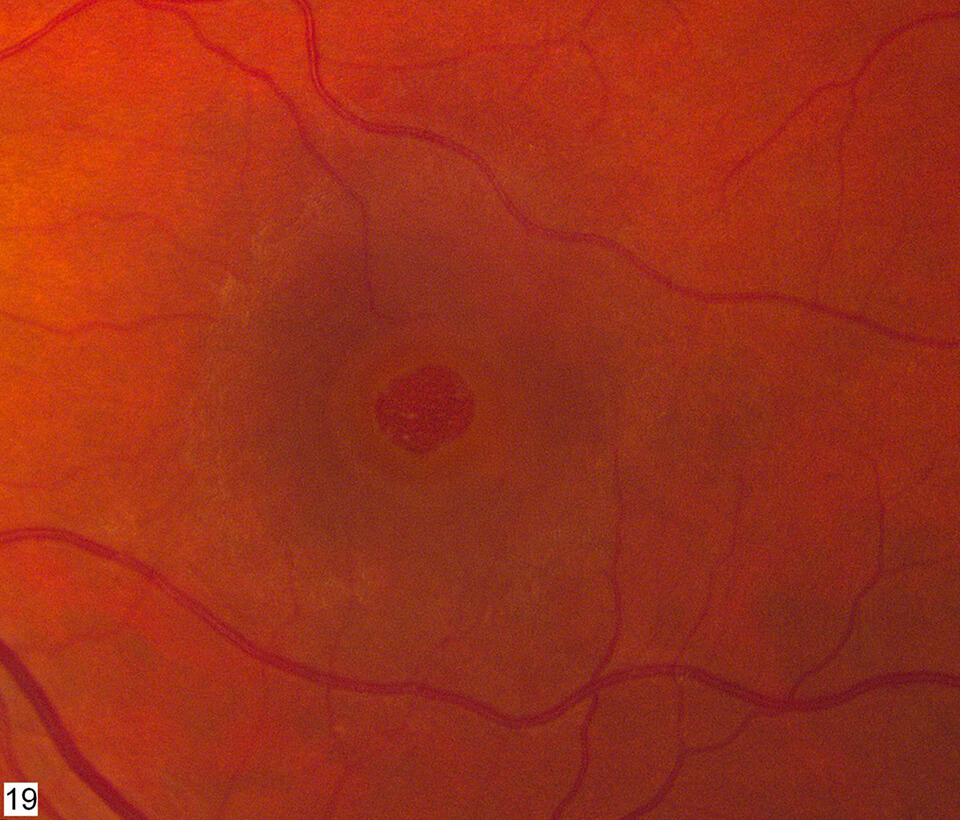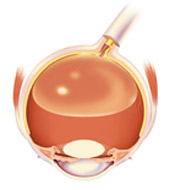Macular Hole
What is a macular hole?
A macular hole is a defect in the center of the macular area of the retina. Additionally, the macula helps give us sharp central and reading vision. The very center portion of the macula, called the fovea, is the thinnest portion of the entire retina. It is in this very delicate foveal area that a macular hole can develop. This is one of the main conditions that we treat at Retina Consultants of Minnesota in Minneapolis and Greater Minnesota.
What are the causes of macular holes?

What are the symptoms of macular holes?
A macular hole causes:
- Loss of sharp “straight-ahead” vision
- Loss of reading vision.
In the early stages of macular hole formation, the hole is very small and the central vision may be only slightly blurred or distorted. As the hole enlarges, the vision becomes progressively worse. The hole also typically enlarges to a point at which the affected eye can only see the larger letters of an eye chart. A macular hole does not cause complete blindness and does not affect the peripheral (side) vision.
How is a macular hole diagnosed?
A macular hole is diagnosed through a thorough dilated eye exam. The eye is carefully inspected in clinic by a retinal specialist. Imaging of the retina will be performed using ocular coherence tomography (OCT). This is a special test that creates two- and three- dimensional images of the retina. The test is painless and provides incredible detail about the anatomy and structure of the retina.
How are macular holes treated?

Who is a candidate for macular hole surgery?
Surgery is recommended for most macular holes. Patients need to have a pre-operative medical assessment before surgery by their primary care provider. Some patients are not good candidates for surgery due to physical limitations or health concerns.
Will I need anesthesia for macular hole surgery?
At Retina Consultants of Minnesota in Minneapolis, our experienced physicians usually perform vitrectomy surgery on an outpatient basis under local anesthesia.
Are there risks to macular hole surgery?
Comparatively, any surgical procedure carries a risk of complications, and macular hole surgery is no exception. Post-operative infection (endophthalmitis) can also be very serious and may lead to blindness in the affected eye. Our team can treat most infections effectively if we identify them at an early stage. Endophthalmitis is rare and occurs in approximately 1 out of 1000 cases. Retinal detachment is another complication that can cause blindness if not treated. Retinal detachments occur in 1 to 2 out of 100 cases following macular hole repair.
The progression of cataract is the third consideration in macular hole surgery. A cataract occurs when the lens in the eye becomes cloudy. This typically occurs with aging but is accelerated by vitrectomy surgery. This is not a concern if the patient has already had cataract surgery prior to vitrectomy surgery.
Other risks of surgery include:
- Bleeding
- Loss of vision
- Double vision
- Scarring
- Droopy eyelid
- Anesthetic complications
Your surgeon will review the risks and benefits of surgery with you.
Macular Hole Surgery Post-Operation Requirements
The most important part of macular hole surgery is the requirement for postoperative face-down positioning. In order for the macular hole to close, the gas bubble must press against the macular hole. Since the macular hole is located directly at the back of the eye, the most effective way to keep the bubble against the hole is for the patient to keep their nose pointed directly downward toward the floor. A variety of positioning aids, such as massage chairs and head-rests, are available to make this requirement more tolerable. The duration of face-down positioning may vary but the average time is 4 to 5 days.
What is the recovery from macular hole surgery?
The amount of visual improvement varies depending on whether the macular hole closes, how long the macular hole was present, the anatomic characteristics of the macular hole, and the presence of any other ocular abnormalities that might limit vision. Many patients recover very good vision. However, some individuals may have more limited improvement, and a small percentage of people may not improve very much at all even with successful surgery. It is important to realize that recovery can take anywhere from 3 months to 1 year for vision to reach its maximal improvement.
How long is the recovery from macular hole surgery?
The total recovery time is several months. Patients will be asked to maintain face down positioning after surgery, from one to seven days, depending on a variety of patient-specific factors. Patients are on post-operative eye drops for a few weeks. The gas bubble gradually resorbs over two to eight weeks. Patients should not fly in an airplane or scuba diving while the gas bubble is in the eye. During your consultation, your doctor will provide you with details of your procedure, including how long recovery it is estimated to take.
Are there non-surgical treatments for macular hole?
Surgery is the treatment of choice for the vast majority of macular holes. That being said, there are certain situations were non-surgical treatments might be tried. Some small macular holes will close on their own with observation. There are also some small macular holes that might close with eyedrops, especially if there is retinal swelling around the margins of the hole. Your retinal specialist will determine the best treatment plan based on the details of your specific situation.
What happens if I leave a macular hole untreated?
Macular holes rarely resolve on their own. If the macular hole is not surgically repaired, it will typically lead to a permanent impairment in a patient’s central vision. An exam from a board-certified retinal specialist can determine the severity of a macular hole. The retinal specialist will then identify the most appropriate treatment plan with the objectives of preserving and restoring eyesight.
How long after Macular Hole Surgery can I drive?
A gas bubble is placed in the eye at the time of macular hole surgery. Vision in the affected eye will be blurry while the gas bubble is present This will lead to limitations in central vision, peripheral vision, and depth perception. Patients should refrain from driving while the gas bubble is present. In addition, patients should not fly, travel to high altitudes, or go scuba diving while the gas bubble is in the eye.
Schedule a Consultation
To learn more about diabetic retinopathy, please call (855) 515-2020 to schedule a consultation.
We are proud to serve the communities of Minneapolis/St Paul, Brainerd, Duluth, Glencoe, Mankato, St. Cloud, and more.

